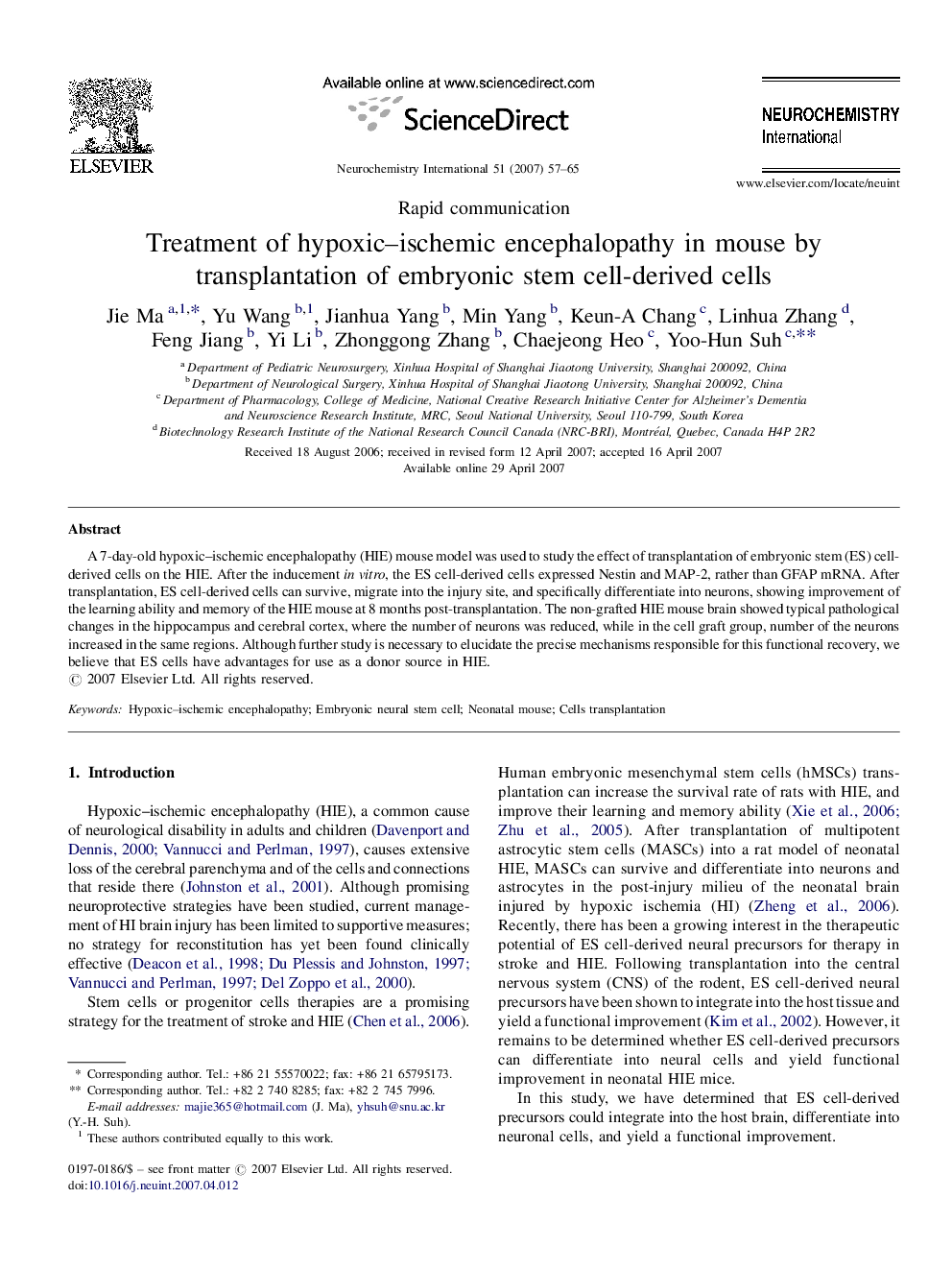| Article ID | Journal | Published Year | Pages | File Type |
|---|---|---|---|---|
| 2202122 | Neurochemistry International | 2007 | 9 Pages |
A 7-day-old hypoxic–ischemic encephalopathy (HIE) mouse model was used to study the effect of transplantation of embryonic stem (ES) cell-derived cells on the HIE. After the inducement in vitro, the ES cell-derived cells expressed Nestin and MAP-2, rather than GFAP mRNA. After transplantation, ES cell-derived cells can survive, migrate into the injury site, and specifically differentiate into neurons, showing improvement of the learning ability and memory of the HIE mouse at 8 months post-transplantation. The non-grafted HIE mouse brain showed typical pathological changes in the hippocampus and cerebral cortex, where the number of neurons was reduced, while in the cell graft group, number of the neurons increased in the same regions. Although further study is necessary to elucidate the precise mechanisms responsible for this functional recovery, we believe that ES cells have advantages for use as a donor source in HIE.
